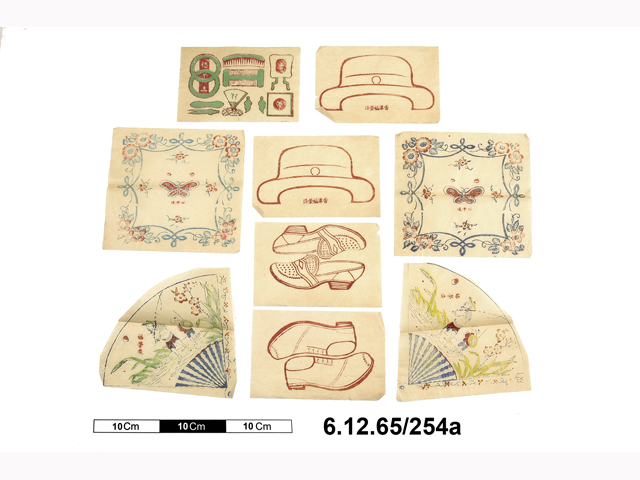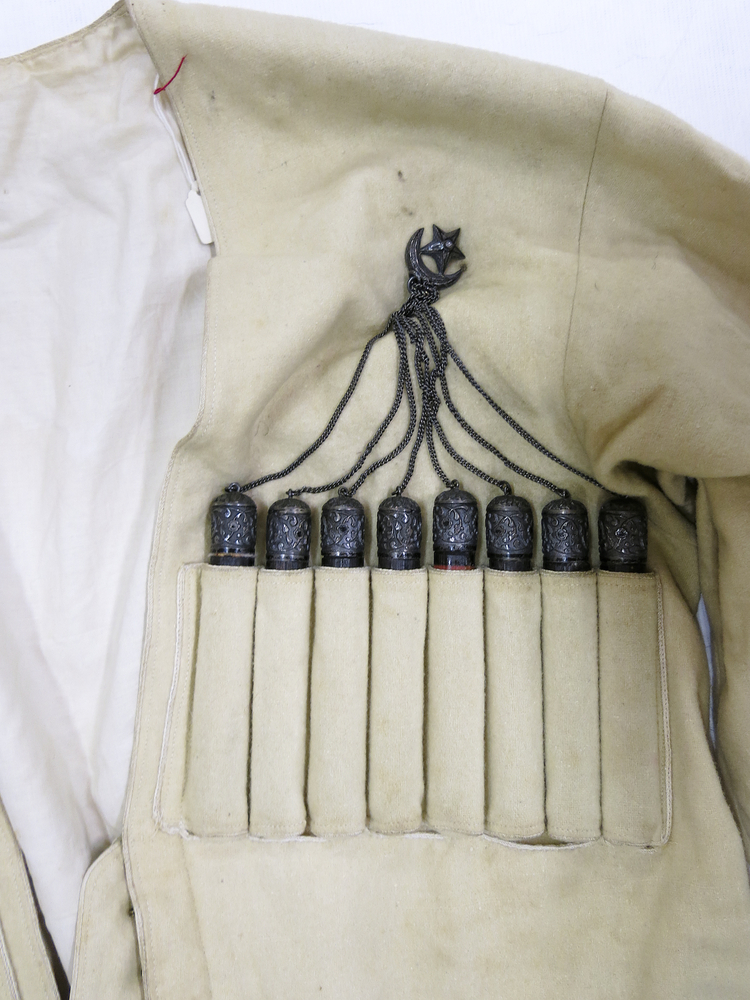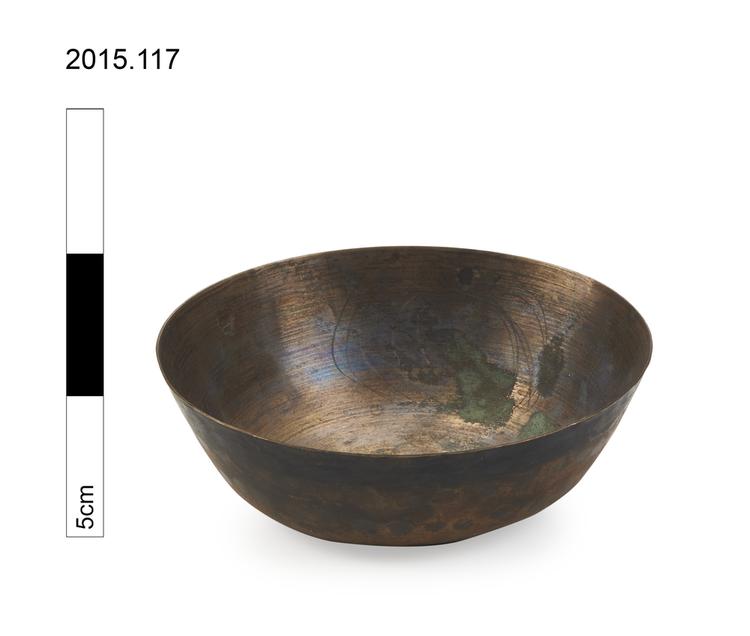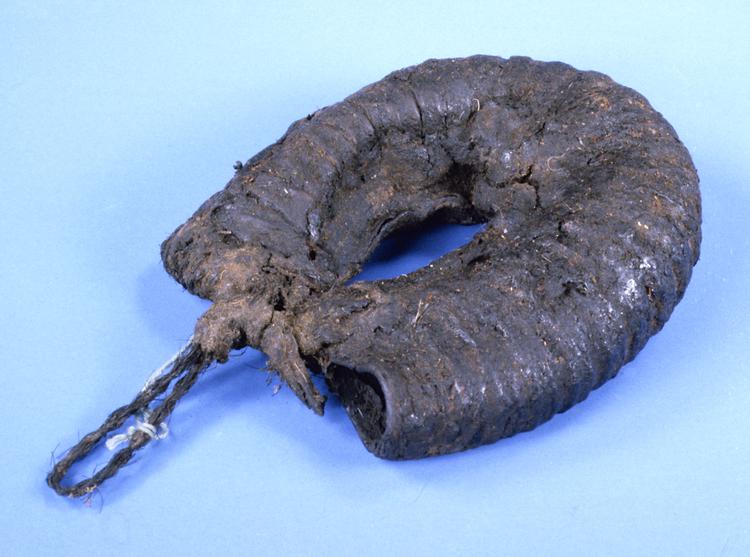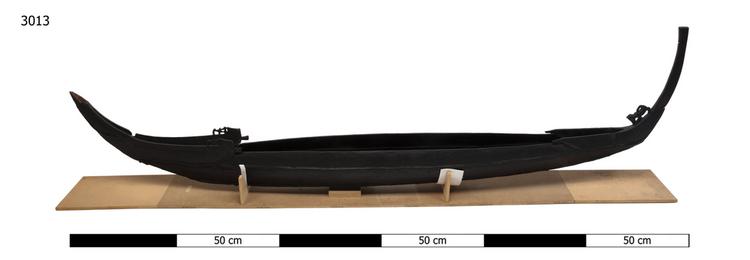
Small canoe of full size without outrigger constructed from sewn planks. The main body of the canoe is manufactured from a flat base of two planks and the walls are each of two planks also. At each end these six planks are joined to a curving prow and stern piece which narrows to a rectangular section. The upper part of the prow has been lost although there is a fine carving where the frat boards join the main body of the canoe in the form of an abstracted fretwork bonito-frigate bird head and relief engraving of a curving prow. The stern piece features a fretwork carving of a dog. In four places the lower four planks of the base and walls would formerly have been unified by cross bars. These are now absent. All of the parts have been drilled and sewn together with coconut fibre cordage and each seam has been carefully sealed with paranarium gum putty. It appears the whole boat has been liberally treated with Creosote, probably at some time in the early 20th century.
3m-Long Canoe, Savo Island, Solomon Islands, Central Melanesia This small transport and fishing canoe was intended solely for inshore use, and could not have made a large voyage on the open ocean. In style, it follows the slender shape of a dugout canoe, although the hull is actually constructed from six narrow planks that taper towards both ends. Two planks form the floor of the boat, and two form each side. Fore and aft, these six timbers butt up to the bow and stern pieces, each cut from a larger curved piece of timber. All these pieces are drilled through around their edges, and the whole canoe is tightly sewn together with plaited coconut fibre cordage. Each of the seams is caulked with a thick ridge of 'putty nut' paste (Parinarium laurinum) to make it watertight. The canoe bears decorative elements on each side of the bow: carvings depicting bonito and the head of the frigate bird, while a dog stands in a dominant position underneath the high stern-piece. Wood, coconut fibre, Parinarium nut. Late 19th Century. Collected off Savo in 1893 by Captain L. Wall of HMS Curacao and sold directly by him to Frederick Horniman. On display in the Museum prior to 1898.



